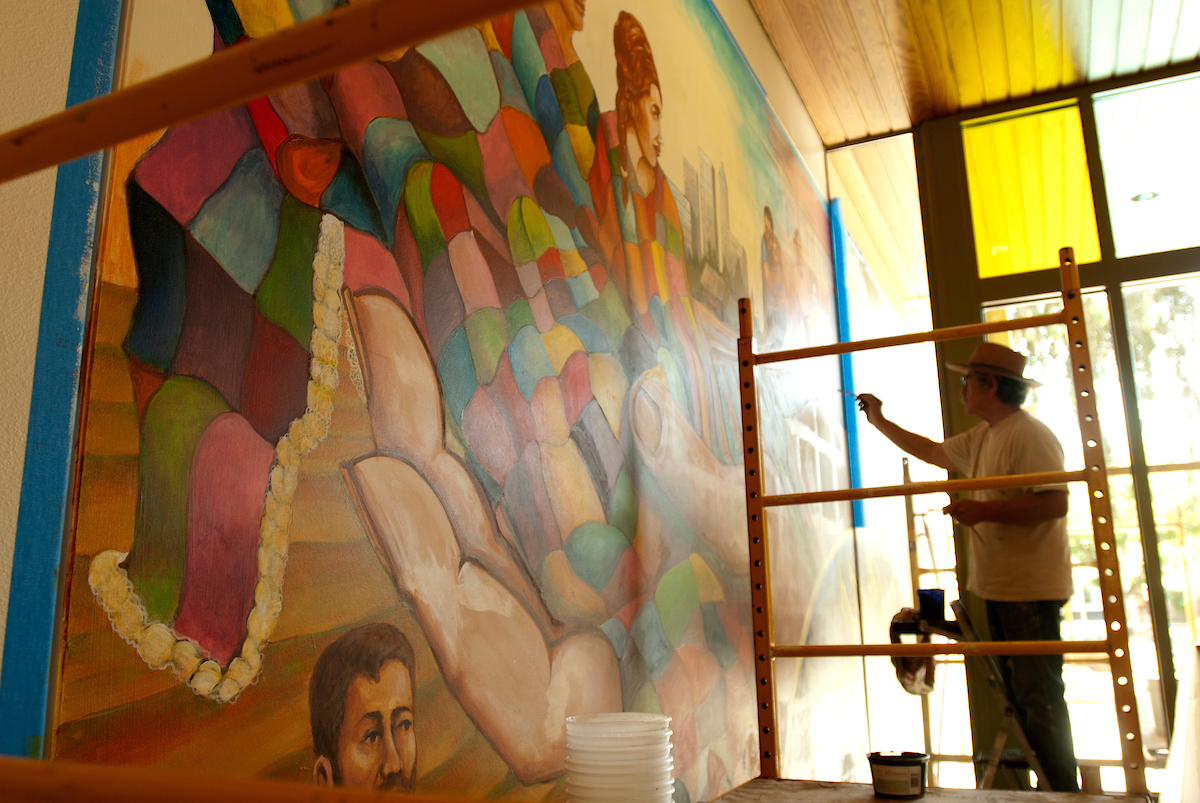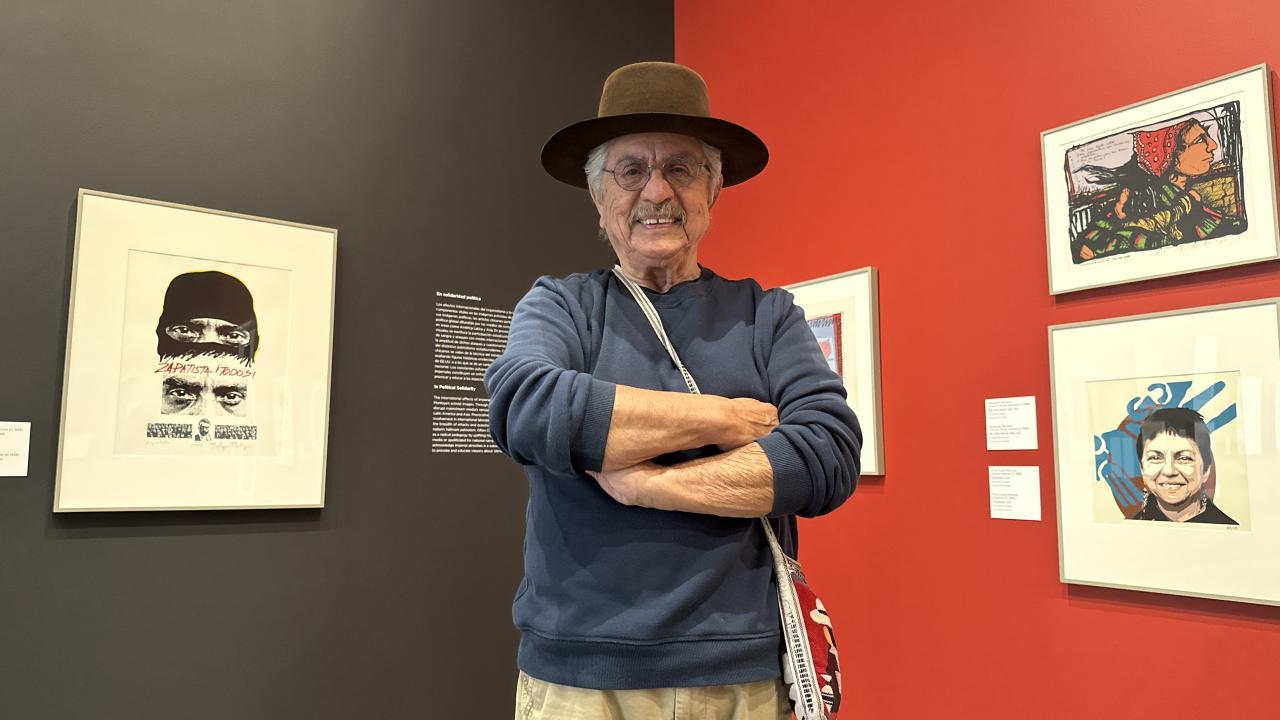Quick Summary
- Montoya, 85, has influenced several generations of students who went on to make art or make a mark on the world in other ways.
- Designed and painted mural on current UC Davis Student Community Center
At recent exhibition openings, Malaquías Montoya was surrounded by former students and colleagues, and artists from all over. Many brought their families to meet the man who has meant so much to them. Although recovering from COVID, he arrived early and left late.
Montoya, a professor emeritus of Chicana and Chicano studies at UC Davis, is being widely celebrated with two major exhibitions: “Malaquías Montoya and the Legacies of a Printed Resistance” at the Jan Shrem and Maria Manetti Shrem Museum of Art at UC Davis and “Por el Pueblo: The Legacy and Influence of Malaquías Montoya” at the Oakland Museum of California.
About current exhibitions
Manetti Shrem's “Malaquías Montoya and the Legacies of a Printed Resistance” through May 6.
Oakland Museum of California: “Por el Pueblo: The Legacy and Influence of Malaquías Montoya” through June 30.
Montoya is an artist. But he is much more. Montoya, 85, has influenced several generations of students who went on to make art or make a mark on the world in other ways.
At UC Davis he created classes in Chicana and Chicano art and culture, mural painting, and poster and print making — all still being taught — and co-founded the printmaking center Taller Arte del Nuevo Amanecer (TANA) that is used by UC Davis students, community members and established artists.
Montoya’s art has been shown in many museums, but the current exhibitions “make me feel good,” said Montoya, who joined UC Davis in 1989 after a decade at the California College of the Arts in Oakland, California.
There is a caveat — museum exhibitions have never been his goal.
“My interest has always been to get my art out to the people who don’t go to museums,” Montoya said while walking through the Manetti Shrem Museum, surrounded by 60 years of his art addressing social and political issues: farmworkers rights, the Vietnam War, U.S. intervention in Central America, and the torture of prisoners by many governments, including the U.S.
The current exhibitions are mostly made up of prints and posters, but a major part of his impact has been through murals created as part of the UC Davis mural class. In those, he and his students worked in conjunction with community members and young people to bring to life the walls of schools, community and health centers, and a juvenile jail. (View this archive with images of the murals and preparatory drawings.)
Once asked if he had gallery representation, he responded, “I have a gallery from Lake Merritt to 87th Street (in Oakland). You can see my work on utility poles and the sides of buildings. The work was for people to see when they drive through the neighborhood or walk to the grocery store.”
Read the full story on the College of Letters and Science website.

Media Resources
More about the UC Davis mural at the student community center.
